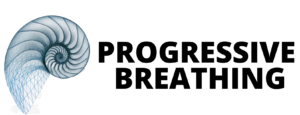The Protective Mechanisms of Nasal Breathing:
Nasal breathing acts as protection and is a vital, natural process designed to filter, warm, and humidify the air before it enters the lungs. The nose serves as a complex defense mechanism, utilizing various structures such as the mucous membrane, cilia, sinus cavities, and sinus ducts to protect the respiratory system. Here’s a breakdown of how these mechanisms work together and why they are essential for optimal respiratory health.
Nasal Breathing & Protection
1. Mucous Membrane:
The nasal passages are lined with a mucous membrane that plays a crucial role in filtering the air we breathe. The membrane produces mucus, a sticky substance that traps particles such as dust, allergens, bacteria, and other harmful substances. The mucus also helps to humidify the air, ensuring it is at the right moisture level before it reaches the lungs.
- Function: The mucous membrane acts as the first line of defense, capturing particles that could otherwise enter the lungs and cause infection or irritation.
2. Cilia:
Embedded in the mucous membrane are tiny hair-like structures called cilia. These microscopic hairs have the job of moving mucus, along with the trapped particles, toward the throat, where they can either be swallowed or expelled.
- Function: Cilia beat rhythmically to propel mucus out of the respiratory tract, keeping the airways clear of contaminants. This prevents foreign particles from reaching the lungs, where they could cause infection, inflammation, or other respiratory issues.
3. Sinus Cavities:
The sinus cavities are hollow spaces within the bones surrounding the nose. These cavities serve several purposes: they help to humidify and warm the air, lighten the weight of the skull, and act as resonance chambers for voice production.
- Function: The sinus cavities are filled with air and lined with mucous membranes that filter and moisten the air as it passes through the nose. The air must pass through these cavities before it enters the lower respiratory tract, ensuring that it is properly conditioned for the lungs.
4. Sinus Ducts:
The sinus ducts are narrow pathways that allow mucus to drain from the sinuses into the nasal cavity. This drainage is important because it helps to remove trapped pathogens, dust, and other contaminants from the sinuses.
- Function: The ducts prevent mucus buildup, which can otherwise lead to sinus infections. They also facilitate the continuous cleansing of the nasal passages by moving mucus into the nasal cavity, where it can be expelled.
5. Pathway of Nasal Breathing:
When you breathe through your nose, air is drawn in through the nostrils and passes through the nasal cavity. The air then moves through the turbinates, bony structures that create turbulence and slow down the air, allowing the mucous membrane and cilia to do their job. As the air continues, it passes through the sinus cavities and ducts, where it is further humidified, filtered, and warmed before reaching the trachea and lungs.
This controlled pathway ensures that the air entering the lungs is free from most harmful particles, properly moistened, and at body temperature, all of which are essential for optimal respiratory health.
How Mouth Breathing Disrupts This Natural Flow:
Mouth breathing bypasses the protective mechanisms of the nose, exposing the respiratory system to a host of potential problems. Here’s a detailed look at how mouth breathing disrupts the natural flow of air and the harmful effects it can cause:
1. Lack of Filtration:
Unlike the nose, the mouth lacks the filtration system provided by the mucous membranes and cilia. When you breathe through your mouth, air enters directly into the lungs without being filtered, allowing dust, allergens, bacteria, and other pollutants to enter the respiratory system unchecked.
- Harmful Effects: This increases the likelihood of infections, allergies, and respiratory conditions such as asthma and bronchitis, as the lungs are exposed to contaminants that would otherwise be trapped by the nasal passages.
2. Loss of Humidification:
Nasal breathing adds moisture to the air, helping to maintain the proper humidity levels in the respiratory system. Mouth breathing, on the other hand, brings in dry air, which can irritate the respiratory tract and lead to dehydration of the mucous membranes.
- Harmful Effects: This dryness can cause throat irritation, chronic cough, and an increased risk of infections because the mucous membranes in the throat and lungs become less effective at trapping pathogens.
3. No Temperature Regulation:
The nose warms the air to body temperature before it reaches the lungs. Protecting the sensitive lung tissue from cold air. Mouth breathing does not provide this warming effect, leading to cooler, drier air entering the lungs.
- Harmful Effects: Cold air can irritate the airways and trigger asthma attacks or other respiratory issues, especially in individuals with pre-existing conditions.
4. Reduced Nitric Oxide Production:
Nasal breathing stimulates the production of nitric oxide. NO is a molecule that helps dilate blood vessels, improve oxygen circulation, and has antimicrobial properties. Nitric oxide is produced in the sinuses and plays an important role in improving the efficiency of oxygen exchange in the lungs.
- Harmful Effects: Mouth breathing bypasses this nitric oxide production, reducing oxygen uptake and circulation efficiency. This can lead to fatigue, impaired cognitive function, and decreased athletic performance.
5. Disruption of the Diaphragmatic Breathing Pattern:
Nasal breathing encourages the use of the diaphragm. This leads to deep, controlled breaths that engage the lower lungs and improve oxygen exchange. Mouth breathing, however, tends to promote shallow, rapid breathing from the chest. This limits the amount of oxygen taken in with each breath.
- Harmful Effects: Shallow chest breathing can contribute to hyperventilation, anxiety, stress, and reduced oxygen delivery to the body’s tissues.
Why Nasal Breathing?
Nasal breathing is a protection mechanism for the respiratory system. Nasal Breathing filters, humidifies, and warms the air before it enters the lungs. The mucous membrane, cilia, sinus cavities, and ducts all work in harmony to ensure that the air we breathe is clean, moist, and at the proper temperature. Mouth breathing, on the other hand, bypasses these protective mechanisms. This leads to an increased risk of infections, respiratory issues, and overall health problems. For optimal respiratory health, it is essential to breathe through the nose, allowing the body’s natural filtration system to work effectively.
Find more reasons why nasal breathing Restores & Optimizes your Health.



